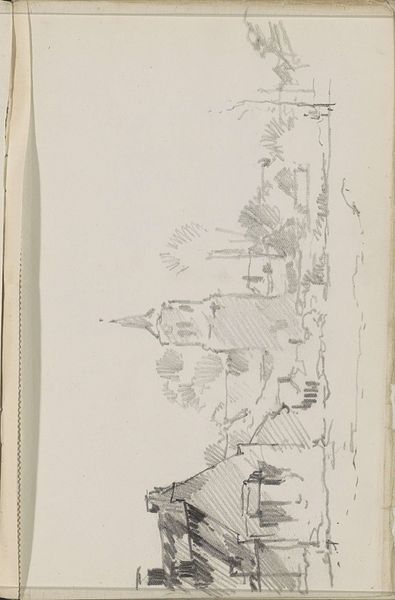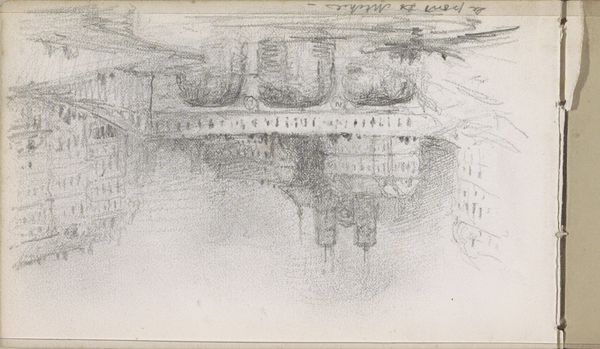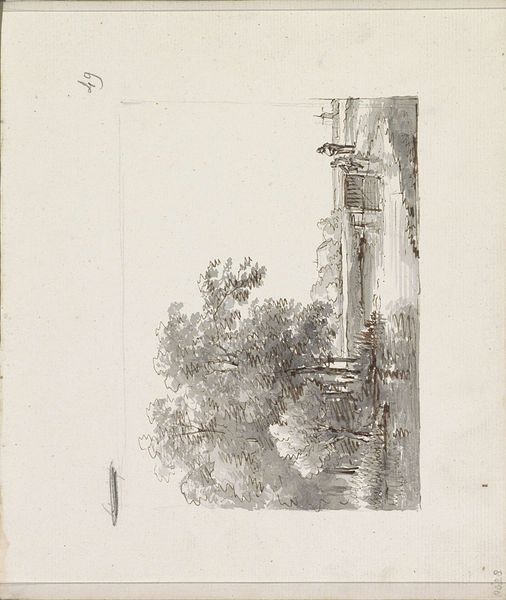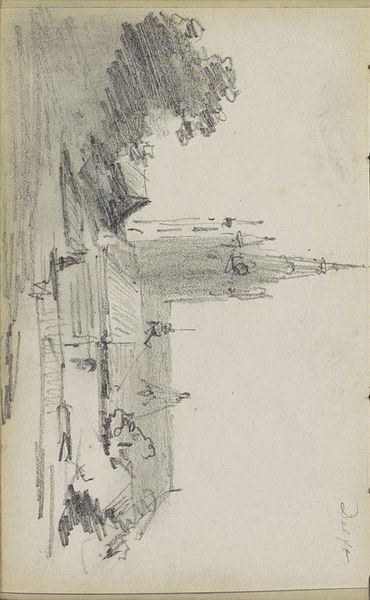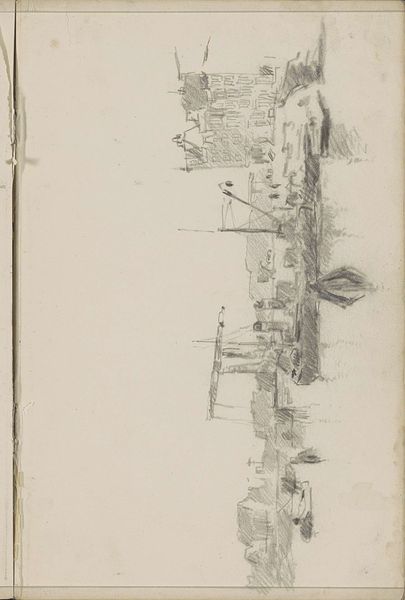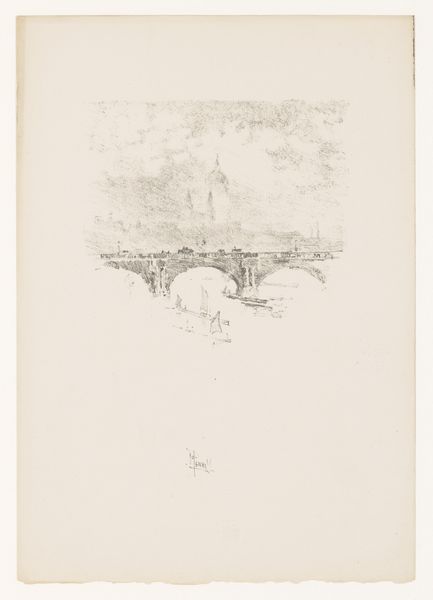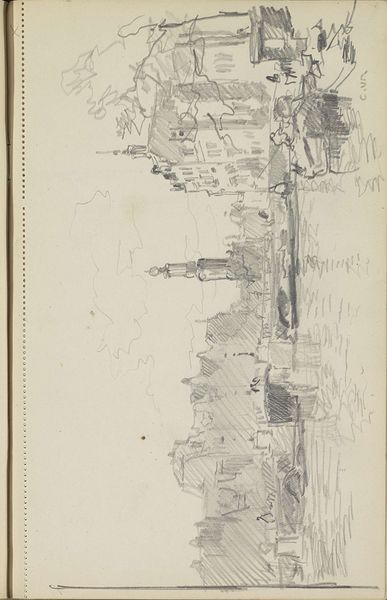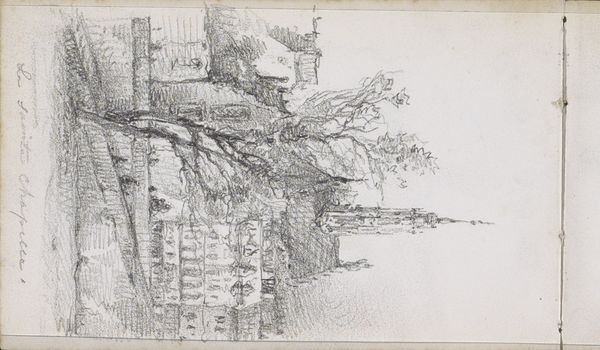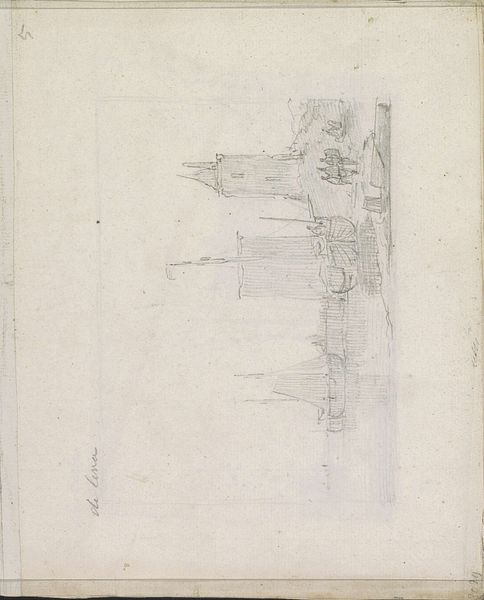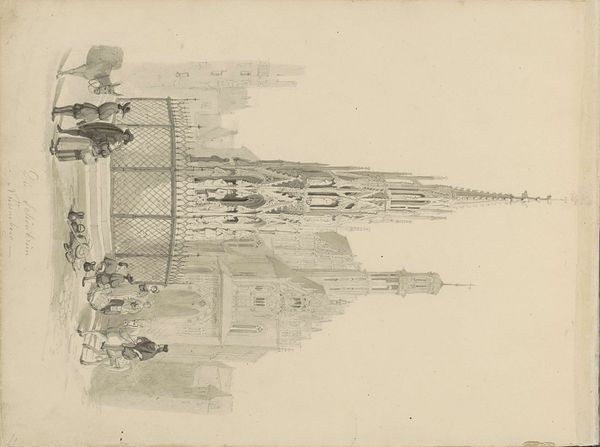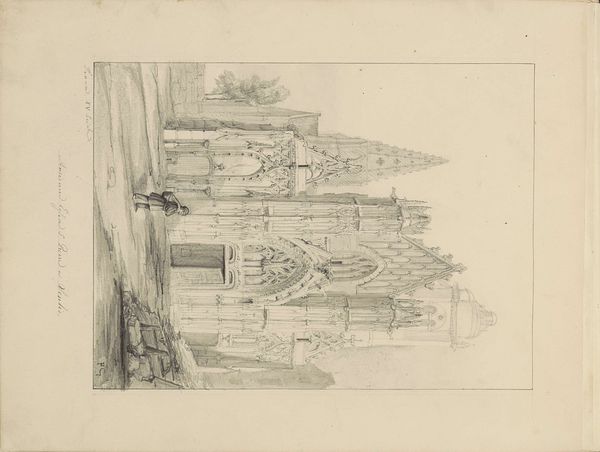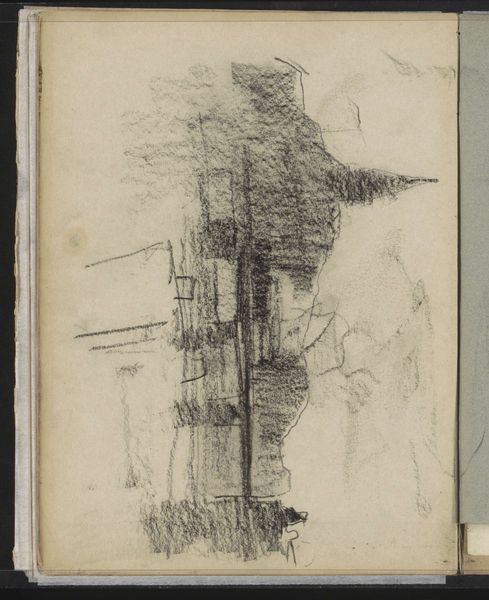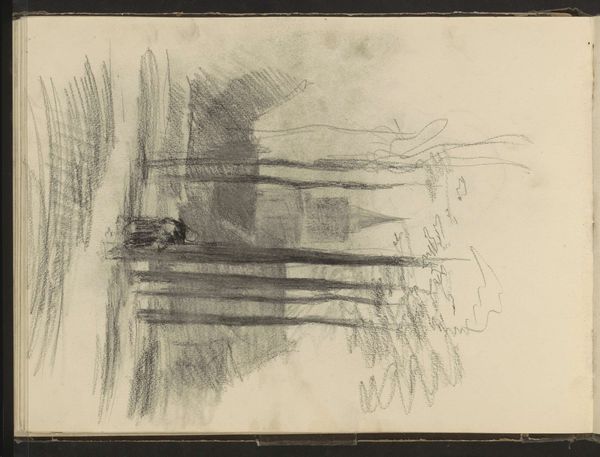
#
amateur sketch
#
toned paper
#
light pencil work
#
pencil sketch
#
incomplete sketchy
#
hand drawn type
#
personal sketchbook
#
pen-ink sketch
#
sketchbook art
#
watercolor
Copyright: Rijks Museum: Open Domain
Curator: Looking at Maria Vos's "Tour Saint-Jacques te Parijs," created in 1867, my first thought is its delicate ethereality. The muted tones on what appears to be toned paper evoke a certain dreaminess. What's your take? Editor: There’s a rawness I find more compelling. The medium – looks like primarily pencil, perhaps with a bit of watercolor wash – combined with the visible sketchbook binding, points to a provisional, almost utilitarian process. A way of documenting observations, perhaps before a more ‘finished’ piece. Curator: Perhaps. The Tour Saint-Jacques itself holds immense significance. It was the former bell tower of a church destroyed during the French Revolution, becoming a symbol of resilience and, some say, even pilgrimage, since it’s near a route to Santiago de Compostela. Editor: Interesting that you focus on what it *represents*. To me, the value lies more in how the artwork reflects access and labor. Who has the privilege, then and now, to spend time sketching landmarks? And how does the act of drawing it change the perception of the built structure? I suspect there's labor hidden from view. Curator: A valid point. But consider, too, the tower's architectural style, Flamboyant Gothic. Its ornate details become faint lines here; the symbols of faith made almost abstract through this quick sketch. Vos is capturing more than a building; she is depicting a layered historical weight, lightly drawn. Editor: I'm more interested in those thin lines and their physical genesis. What pencils were used, the sourcing of the toned paper, what type of support, if any, and the skill and labor that informs that rendering of architectural forms. How accessible are these materials and the time and effort they take? It certainly begs a discussion about class and gendered production. Curator: I see what you mean. By isolating the components of art production you highlight the broader forces that allow such an artwork to come into being. Editor: Exactly. Analyzing Maria Vos’s technique is also about recognizing material conditions that determine how and what she represents. Curator: In seeing the materials, you uncover not only the context of creation, but something beyond mere physical production. Fascinating. Editor: Precisely, and it's a privilege to unpack that materiality today.
Comments
No comments
Be the first to comment and join the conversation on the ultimate creative platform.
